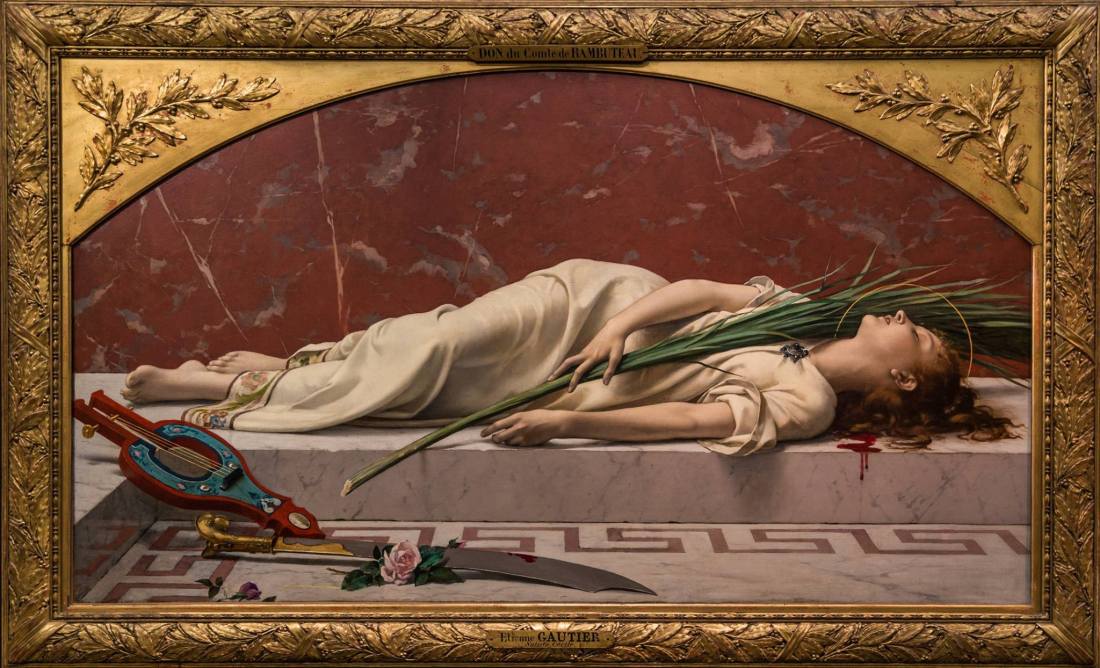As corroborated by the Book of Genesis, the notion of poverty came to be the day Dasein felt the need to manifest its realness to itself, that is to say that poverty defined itself as such on the very day Dasein appeared to itself as Dasein.
First problem experienced: If Man exists, it’s his problem.
Second problem (experienced): If God did not exist, it would have been necessary for me to invent Him.
Non-being is not the Nothing. Non-being is what is contained within language (and its semantic) as the eternally deferred undetermined, is what can only be contained within language (and its semantic) as what is essentially without language and without semantic. A table is simultaneously a table and a non-table. Yet we call it a table. Being-as-such is constituted as such through the constitutive act of language.
Looking at ‘The Persistence of Memory’ by Salvador Dalí, we can appreciate, perceptively, the ingenious depiction of non-being (or at least the playful optically illusory depiction of non-being). The painting, though, only manages to work its magic if you keep looking at it – look away, and you only have a memory of the painting. That is to say that the phenomenon contained in the painting, the credible depiction (or optically illusory depiction) of non-being, is missing in memory. In memory, all we retain is the linguistic act which linguistically constitutes that phenomenon evinced while looking at the actual painting and out of which arises (that which we call) the memory of that perceived phenomenon – a representation (the term representation here to be understood strictly as “a copy”, and therefore “a memory”) of the perceived phenomenon – not the phenomenon, the magic, itself! That is the same as saying that the painting is real. But what about memories (and the concomitant past), which have come to be unattached from the-real-out-there? As phenomena of the mind, what constitutes their phenomena as such? Memories (and the concomitant past) are linguistically constituted linguistic acts. Their determinant, the actual event or sequence of events that took place at a certain point in time and occupied a certain location in space, is, however, lost. All we retain of this event or sequence of events is a mental phenomenon which when deconstructed appears as a linguistically constituted linguistic act we have come to describe as a memory. But how can the words ‘retain’ and ‘phenomenon’ be retained here when we have said that the determinant of that which is retained has been lost and what is thus supposedly retained is a mental phenomenon that has not retained its phenomenon, namely reality? Mental phenomena are a reality. Therefore, one asks: if mental phenomena, which are inherently non-phenomenal, are indeed experienced, how is it that as non-phenomena such phenomena are capably experienced? Simplified further: how does one remember the memory? Every utterance from the Other is a question. Every question seeks the past for an answer. The past, always lost, guarantees nothing… guarantees nothing, as long as the past does not happen to reside intact in the mind of him who has never forgotten.
The Other is indeed no other; one’s fate is proof enough.
Being and beings, being, are all ontological. The Other, only, is prior to ontology.
The Other constitutes the realness of the Self. (Note: no longer Dasein!)
(I wish you all lots of happy ‘photographic’ snapping.)
Featured Image:
Etienne GAUTIER. 1878. Sainte Cécile Morte [painting]. Twitter [online]. Available at: https://twitter.com/artnau/status/1310202533034577920/photo/1 [accessed 14 May 2021].
